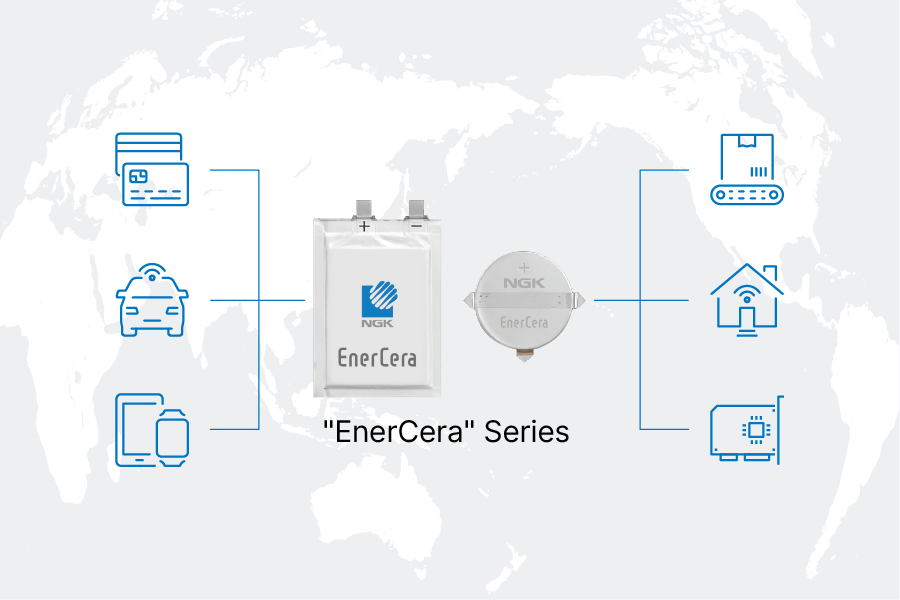major household device manufacturerDevelopment division
Solving Power Supply Issues for Smart Home SensorsThe challenge of finding the right power source for “smart home” IoT sensors

Solutions
Finally, a Prospect for a Successful Smart Home Sensor
Solution Offered by EnerCera battery
If rechargeable batteries were used to power the sensors, they would never need to be retrieved or replaced.
A compact, high capacity, high power EnerCera battery could be charged with the minuscule power yielded by energy harvesting and/or wireless power transfer, while at the same time outputting the large power needed for wireless communication and sensors.
The 0.45mm EnerCera Pouch was the ideal power supply for the compact and thin sensors being developed.
The reflow-solderable EnerCera Coin was a good option for applications requiring ease of mass-production and durability.
Being semi-solid-state battery , the products in the EnerCera series are safer than conventional lithium-ion rechargeable batteries, and are suitable for household applications.
Adding EnerCera Battery to the Design
The development team came across information on NGK Insulators, Ltd’s website about an application that combined the compact EnerCera lithium ion rechargeable battery with wireless charging technology. Thinking that it might be the solution to their problems, a member of the development team immediately contacted NGK, and asked whether the EnerCera battery was compatible with the smart home sensors it had in mind. A few days later, a representative of NGK visited the development team with EnerCera Pouch and EnerCera Coin samples and a proposal for solving their problem.
EnerCera Battery Makes High-Tech Smart Home Sensors a Reality
The team built a prototype sensor using the EnerCera samples they had received, and subjected them to testing. The products in the compact high capacity and high power EnerCera battery can be recharged using the minuscule power yielded by energy harvesting, and at the same time are also able to output the large power necessary to power smart home sensors. The team’s wiring and power supply problems were solved! By deploying either the slimline EnerCera Pouch or the robust EnerCera Coin, as appropriate to the location in question, the team was able to create a range of sensors that did not compromise on design or functionality.
In view of the positive results, the team proceeded to trial the sensor in an actual house set up inside a modular home showroom. They verified that the various services supported by the EnerCera battery powered sensors in the smart home operated correctly. Visitors to the showroom were also very interested in the technology, with elderly visitors particularly impressed with the fact that troublesome battery replacement is not required, and that the security system could be used without worrying about flat batteries.
While receiving advice from NGK, the team is currently making their sensors smaller, flatter, and more energy-efficient, as they put the finishing touches on their smart home service in preparation for its commercial debut.


